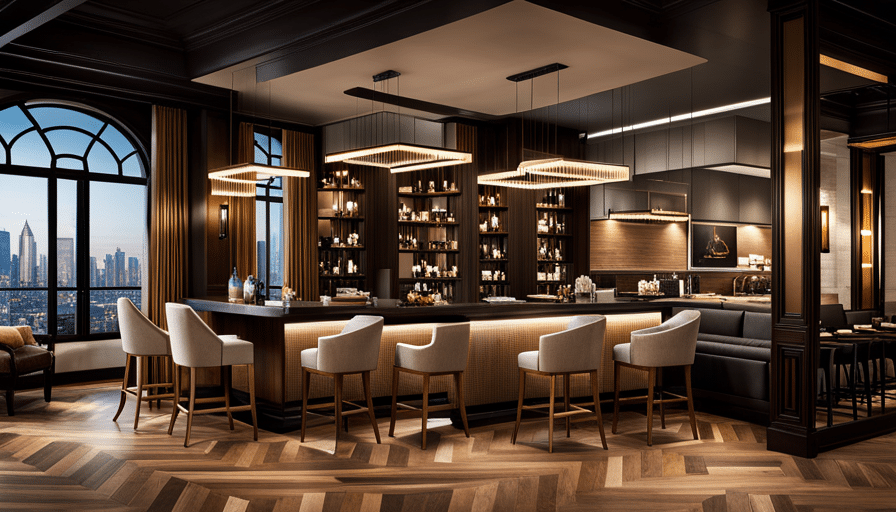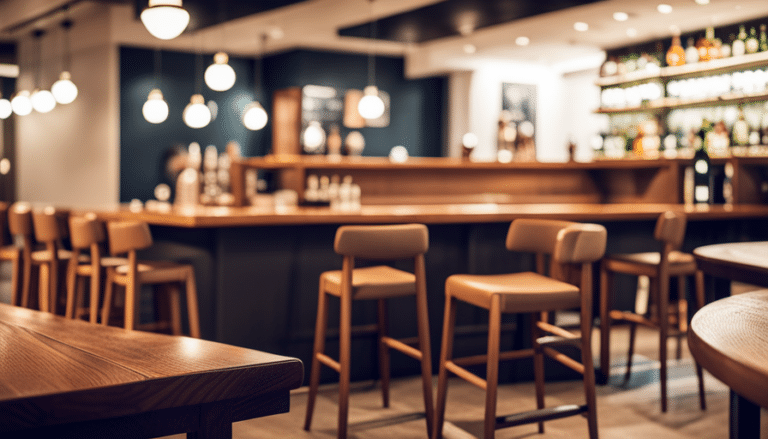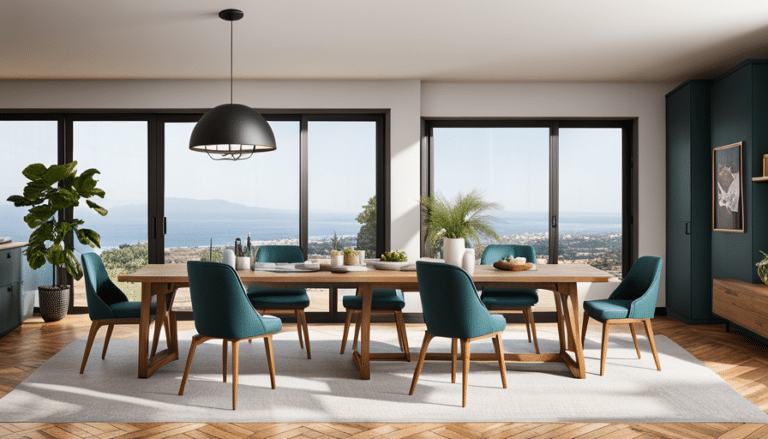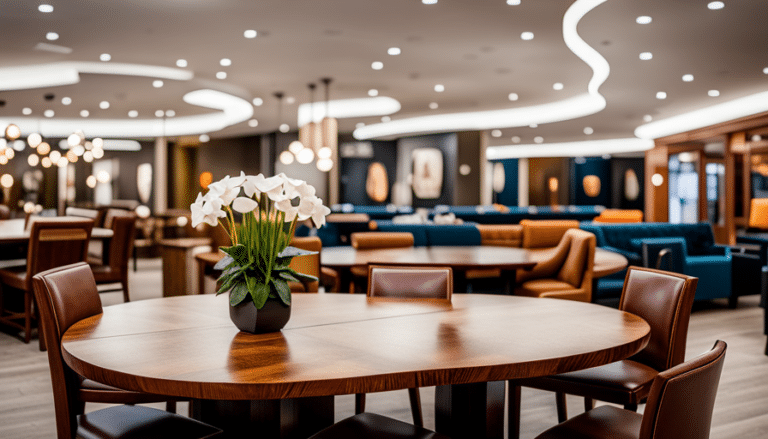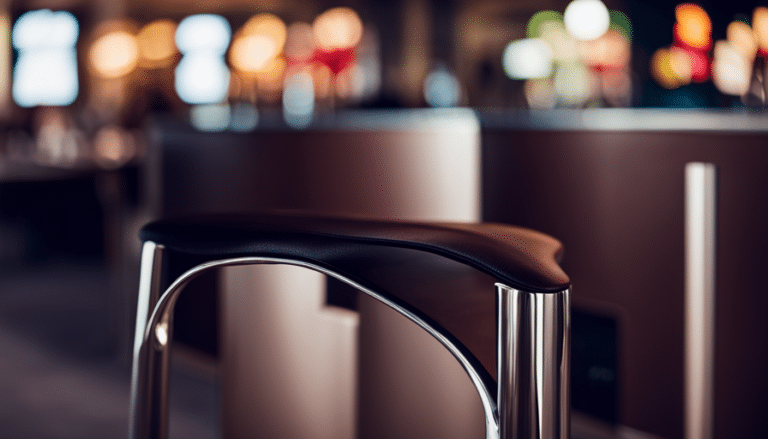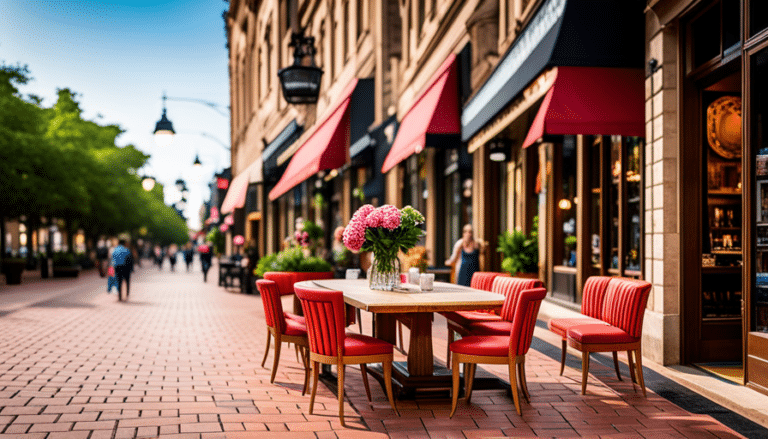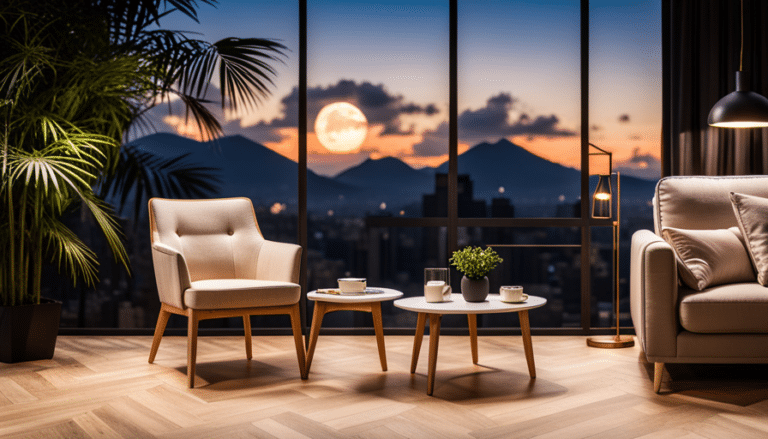Are Fabric Dining Chairs Suitable for Bar?
Fabric dining chairs have long been a popular choice for dining rooms, offering comfort and style. However, when it comes to bars, the suitability of fabric dining chairs may be called into question. This article aims to explore the factors that should be considered when choosing bar seating and to weigh the pros and cons of using fabric dining chairs in a bar setting.
Firstly, the durability and maintenance of fabric dining chairs will be examined. Bars often experience high traffic and spills, making it crucial to select seating options that can withstand constant use and are easy to clean.
Additionally, the design and aesthetic considerations of fabric dining chairs will be discussed, as they play a significant role in creating an inviting atmosphere for customers.
Furthermore, customer comfort and satisfaction are essential factors to consider, as patrons will likely spend extended periods seated in the bar area.
Finally, alternative seating options for bars will be explored to provide a comprehensive view of the available choices. By examining these factors, this article aims to provide valuable insights into whether fabric dining chairs are suitable for bar settings.
Factors to Consider When Choosing Bar Seating
When selecting bar seating, it is important to consider various factors that will contribute to the overall comfort and functionality of the space. Two key factors to consider are the barstool height and space utilization.
The height of the barstool is crucial in ensuring that customers can sit comfortably at the bar. Barstools are typically higher than regular dining chairs to accommodate the elevated bar height. The standard barstool height ranges between 28 to 32 inches, allowing customers to comfortably reach the bar and rest their feet on a footrest. It is important to choose barstools that are of appropriate height to prevent discomfort and ensure a pleasant experience for patrons.
Space utilization is another factor to consider when selecting bar seating. Bars tend to have limited space, so it is important to optimize the available area. Fabric dining chairs can be suitable for bars as they provide a comfortable seating option while also being space-efficient. Unlike bulkier chairs, fabric dining chairs have a sleek and slim design that allows for easier movement and flexibility in arranging the seating layout. This ensures that more customers can be accommodated in a limited space while still providing comfort and style.
Considering the barstool height and space utilization are crucial when selecting bar seating. By taking these factors into account, bar owners can create a comfortable and functional space that caters to the needs of their customers.
Pros and Cons of Fabric Dining Chairs
One advantage of using fabric dining chairs is that they offer a comfortable seating option for patrons at bars. Fabric chairs are known for their softness and cushioning, which can enhance the overall dining experience for customers. Additionally, the use of fabric dining chairs can contribute to a warm and inviting atmosphere in a bar setting.
However, there are some durability concerns associated with fabric dining chairs in a bar environment. Fabric is more prone to wear and tear compared to other materials such as leather or vinyl. This is especially true in a busy bar where chairs are constantly being moved and used by different patrons. Over time, the fabric may start to show signs of fraying or fading, requiring regular maintenance or even replacement.
Cleaning fabric dining chairs can also present some challenges. Spills and stains are inevitable in a bar, and fabric chairs can absorb liquids and become stained easily. Regular cleaning and maintenance are necessary to keep the chairs looking clean and presentable. It is important to choose fabrics that are stain-resistant and easy to clean, but even with these precautions, it may be difficult to completely remove certain stains.
While fabric dining chairs can provide comfort and contribute to a cozy atmosphere in a bar, durability concerns and cleaning challenges should be taken into consideration when making a decision about their suitability for this type of establishment.
Alternative Seating Options for Bars
An alternative seating option for bars that can offer a unique and stylish ambiance is the use of high bar stools and tall tables. Stool options for bars come in a variety of styles and materials, allowing for customization to match the bar’s overall aesthetic.
High bar stools are typically taller than traditional dining chairs, which allows patrons to sit at a higher elevation and have a better view of the bar area. Additionally, the elevated seating position of bar stools promotes a more casual and relaxed atmosphere, perfect for socializing and enjoying drinks with friends.
Bench seating is another popular alternative for bars, providing a communal and inclusive atmosphere. Bench seating for bars can accommodate multiple individuals, allowing groups to sit together comfortably. This type of seating encourages interaction and conversation among patrons, fostering a lively and energetic environment. Bench seating options for bars can vary in size and design, ranging from upholstered benches to wooden benches with backrests.
When considering alternative seating options for bars, it is important to take into account the overall theme and atmosphere of the establishment. High bar stools and tall tables are ideal for bars aiming for a modern and trendy vibe, while bench seating creates a more casual and communal ambiance. Ultimately, the choice of seating should reflect the desired atmosphere and cater to the preferences of the target clientele.
Durability and Maintenance of Fabric Dining Chairs
The durability and maintenance of fabric dining chairs can be a crucial factor to consider when selecting seating options for establishments. Fabric chairs are commonly used in dining settings due to their aesthetic appeal and comfort. However, there are some durability concerns associated with fabric chairs in high-traffic areas such as bars.
Fabric dining chairs are susceptible to wear and tear, especially when exposed to frequent use and spills. The fabric can fade, stain, or become damaged over time. To mitigate these concerns, it is important to choose a durable fabric that is resistant to stains and fading.
Additionally, regular cleaning and maintenance are essential to prolong the lifespan of fabric dining chairs in a bar setting. Cleaning methods for fabric dining chairs vary depending on the type of fabric used. It is important to follow the manufacturer’s guidelines for cleaning and maintenance to avoid damaging the fabric.
In general, regular vacuuming or brushing can help remove dust and debris. Spot cleaning with a mild detergent and water can address small stains. For larger or more stubborn stains, professional cleaning may be necessary.
While fabric dining chairs can provide a comfortable and visually appealing seating option for bars, their durability and maintenance should be carefully considered. Choosing a durable fabric and implementing regular cleaning and maintenance practices can help ensure the longevity and aesthetic appeal of fabric dining chairs in a bar setting.
Design and Aesthetic Considerations
Considerations for the design and aesthetic appeal of seating options in a bar setting are essential for creating an inviting and visually pleasing atmosphere.
When it comes to fabric dining chairs, there are several design trends and color options to consider.
In terms of design trends, it is important to choose fabric dining chairs that align with the overall theme and style of the bar. For example, if the bar has a modern and minimalist aesthetic, chairs with clean lines and simple designs would be a suitable choice. On the other hand, if the bar has a more traditional or rustic feel, chairs with ornate detailing or upholstered in rich fabrics may be more appropriate.
Color options are another important consideration. The color of the fabric dining chairs should complement the overall color scheme of the bar. Neutral colors such as black, white, or gray are versatile options that can easily blend with different decor styles. Alternatively, bold and vibrant colors can add a pop of excitement and create a focal point in the bar.
Ultimately, the design and aesthetic considerations for fabric dining chairs in a bar setting should be guided by the desired atmosphere and ambiance. By carefully selecting chairs that align with the overall design theme and color scheme, bar owners can create a visually cohesive and inviting space for their patrons.
Customer Comfort and Satisfaction
Moving on from the previous subtopic of design and aesthetic considerations, it is essential to explore the aspect of customer comfort and satisfaction when considering the suitability of fabric dining chairs for a bar setting. In order to provide an enjoyable dining experience, customer comfort should be a top priority.
Customer feedback plays a crucial role in evaluating the comfort of fabric dining chairs in a bar. It allows bar owners to gather valuable information on how patrons perceive the seating options provided. This feedback can highlight any issues related to comfort, such as inadequate padding, lack of lumbar support, or discomfort caused by the fabric itself.
Furthermore, ergonomic design is a key aspect to consider when selecting fabric dining chairs for a bar. Ergonomics focuses on creating products that optimize human well-being and performance. Ergonomically designed fabric dining chairs can provide optimal support and comfort for customers, reducing the likelihood of discomfort or pain during prolonged seating.
By incorporating customer feedback and prioritizing ergonomic design, bar owners can ensure that fabric dining chairs are suitable for their establishment. This approach not only enhances customer comfort and satisfaction but also contributes to the overall success of the bar by creating a welcoming and enjoyable environment for patrons.
Frequently Asked Questions
What are the different types of fabric materials commonly used for dining chairs?
Common fabric materials used for dining chairs include linen, cotton, velvet, and microfiber. Linen offers a natural and breathable option, while cotton provides durability. Velvet offers a luxurious feel, and microfiber is stain-resistant. Each material has its pros and cons.
Are fabric dining chairs resistant to stains and spills?
Fabric dining chairs can be made resistant to stains and spills through the application of stain-resistant treatments. When comparing fabric dining chairs to leather options for bar seating, it is important to consider the durability and ease of cleaning.
Can fabric dining chairs be easily cleaned and maintained?
Fabric dining chairs can be easily cleaned and maintained by employing various cleaning techniques such as spot cleaning, steam cleaning, or using upholstery cleaners. The best fabric choices for easy cleaning are those with stain-resistant features like microfiber or leather.
Are there any specific design considerations when choosing fabric dining chairs for a bar?
When choosing fabric dining chairs for a bar, it is important to consider their design. Factors such as durability, stain resistance, and ease of cleaning are crucial. Additionally, the chairs should be aesthetically pleasing and complement the overall design of the bar. The pros of using fabric dining chairs in a bar include their comfort and versatility in terms of design options. However, the cons include the need for regular maintenance and potential for staining.
Do fabric dining chairs provide enough comfort and support for long periods of sitting at a bar?
Fabric dining chairs can provide adequate comfort and support for long periods of sitting at a bar. However, the choice between comfort and style, as well as durability and affordability, should be carefully considered when selecting these chairs for a bar setting.
Conclusion
In conclusion, when considering bar seating options, it is important to carefully evaluate the suitability of fabric dining chairs.
While they offer certain advantages such as comfort and aesthetic appeal, there are also potential drawbacks in terms of durability and maintenance.
Additionally, alternative seating options should be explored to cater to the specific needs and preferences of bar patrons.
Ultimately, the decision should be based on a comprehensive analysis of factors including durability, maintenance, design, and customer satisfaction.

